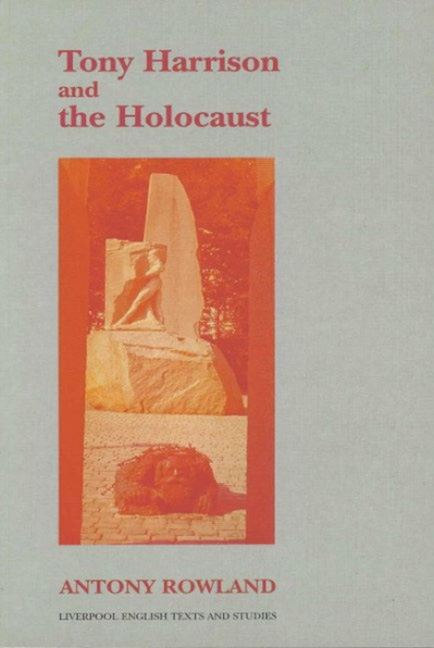Book contents
- Frontmatter
- Dedication
- Contents
- Acknowledgements
- Introduction
- 1 Cinema, Masturbation and Peter Pan: A Non-Victim Approach to the Holocaust
- 2 Amorous Discourse and ‘Bolts of Annihilation’ in the American Poems
- 3 Mourning and Annihilation in the Family Sonnets
- 4 The Fragility of Memory
- 5 Culture/Barbarism Dialectics in Harrison's Poetry
- Bibliography
- Index
1 - Cinema, Masturbation and Peter Pan: A Non-Victim Approach to the Holocaust
- Frontmatter
- Dedication
- Contents
- Acknowledgements
- Introduction
- 1 Cinema, Masturbation and Peter Pan: A Non-Victim Approach to the Holocaust
- 2 Amorous Discourse and ‘Bolts of Annihilation’ in the American Poems
- 3 Mourning and Annihilation in the Family Sonnets
- 4 The Fragility of Memory
- 5 Culture/Barbarism Dialectics in Harrison's Poetry
- Bibliography
- Index
Summary
Belsen Newsreel and Peter Pan
In the article ‘The Inkwell of Dr Agrippa’, Harrison writes: ‘When I search my childhood for something to explain what drove me into poetry [… my] images are all to do with the War’. As well as stressing his northern – but not, in terms of the quotation, especially working-class – credentials, he remembers his experience of the Second World War as a child in Beeston:
One of my very earliest memories is of bombs falling […] myself and my mother crouching in the cellar […] lit-up streets […] the whistlings sounded so festive […] Another is the contact I had with German prisoners of war in a work party near our street. I remember only we children talked to them much […] Another is of a street party with a bonfire and such joy, celebration and general fraternity as I have never seen since. As I grew up the image stayed but I came to realise that the cause of the celebration was Hiroshima. Another is the dazed feeling of being led by the hand from a cinema into the sunlit City Square after seeing films of Belsen in 1945, when I was eight. Around all these too is a general atmosphere of the inarticulate and unmentionable, a silence compounded of the hand-me-down Victorian adage, ‘children should be seen and not heard’ and the mock-Yorkshire taciturnity of ‘hear all, see all, say nowt’.
This quotation posits Hiroshima and the Holocaust, and the broader context of the war, as loci for his poetry. These images of a particularly British experience of the war are returned to throughout his oeuvre. Falling bombs recall the child crouching in the cellar in ‘A Close One’, and the nightmarish sound of a passing plane in ‘Listening to Sirens’; in the former poem, a montage of searchlights and Messerschmitts haunts the poet's memory to the extent that the process of mourning for his parents’ deaths cannot be divorced from historical trauma. ‘Lit-up streets’ evokes the trope of fire which runs throughout his work, and connects such diverse referents as the family hearth and the bombing of Hiroshima and Nagasaki.
- Type
- Chapter
- Information
- Tony Harrison and the Holocaust , pp. 33 - 86Publisher: Liverpool University PressPrint publication year: 2001



